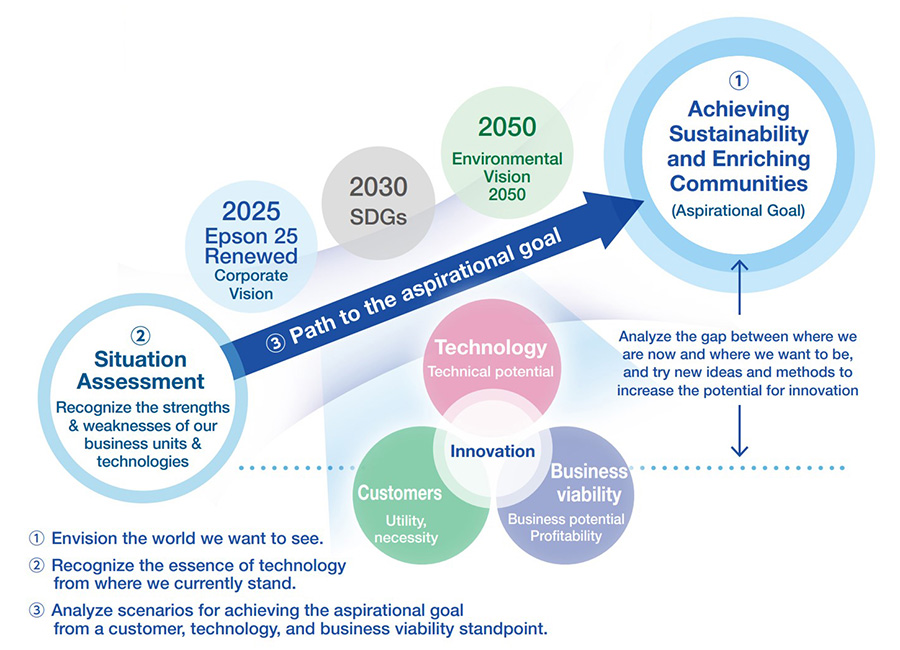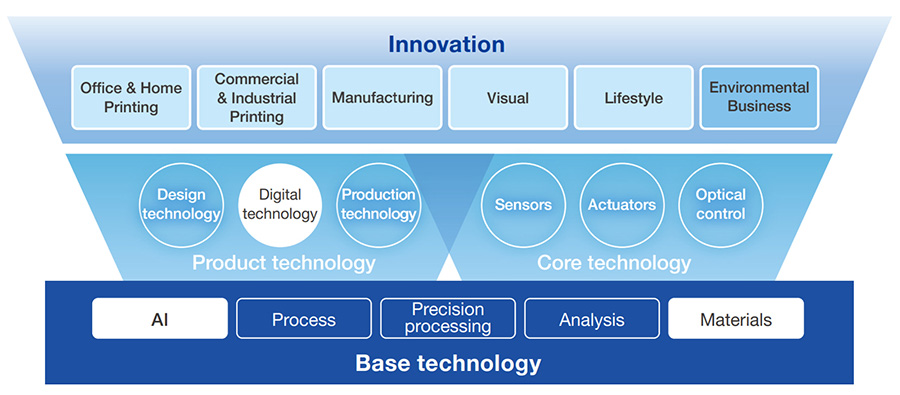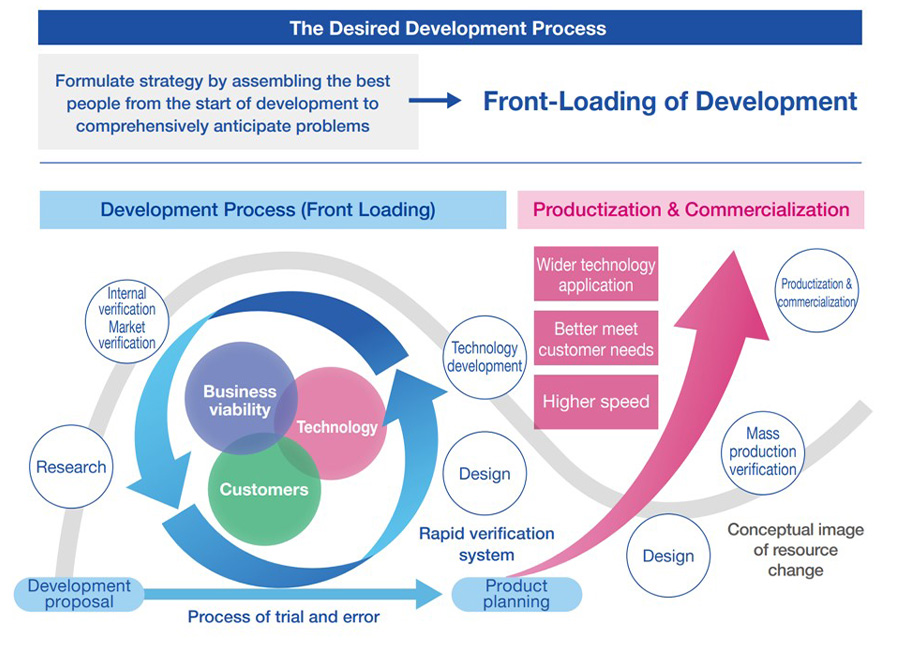We will create the technology needed to achieve our aspirational goal and take on challenges with new ideas and methods.
Development Vision
- Trying new ideas and methods to achieve sustainability and enrich communities
Epson has always provided value by examining ways it can use its efficient, compact, and precision technologies to benefit society. Under Epson 25 Renewed, however, we are taking a different approach. Now, we always start with societal issues, analyze what kind of technology is needed to solve them, and then develop that technology.
To shift to this approach, we had to objectively evaluate our capabilities to reveal the gap between where we are and where we want to be (our aspirational goal). We are working to close this gap by mapping out a technology development path, while also taking into account societal issues and business viability.
Epson will try to achieve sustainability and enrich communities by boldly taking on challenges with new ideas and new methods.

Technology Development Strategy
- Advance basic, core, and product technologies that support innovation
Strengthen material, AI, and digital technologies to create both product and experience value
We have defined four material issues ("materialities") in Epson 25 Renewed based on societal issues. In technology development we are focusing on three of them. First, to achieve sustainability in a circular economy, we are focusing on developing technology to become carbon negative and close the resource loop, primarily by developing materials to free us from reliance on underground resources. Second, to advance the frontiers of industry, we will transform manufacturing by providing solutions such as automated equipment that saves energy and space and accurately performs complicated tasks that require precision. Third, to improve the quality of life, we will enable all to enjoy a healthy and satisfying life by using AI and digital technology to connect all people to information captured by sensors. Our role in solving these material issues is to contribute technology. Core and product technologies are derived from base technologies and these, in turn, underlie each business and drive innovation.

We must thus continuously advance our base, core, and product technologies, and want to particularly strengthen materials, AI, and digital technologies. Materials will significantly contribute to the environmental business. We will focus on developing plastic-free technology that uses the defibration technology utilized in the PaperLab and on developing highly functional, more eco-considerate metal powders. AI and digital technology are essential in accelerating the shift from products to experiences.
We will strengthen algorithms and AI technologies for converting data extracted from Epson products into customer value. The environment, digital transformation (DX), and co-creation are priorities for realizing Epson 25 Renewed, but co-creation is also an important factor in technology development. Considering business only in the context of your own technology will end up confining you to a narrow area and limit your speed. Epson does not have everything that is required to solve societal issues. The idea of Epson 25 Renewed is to create new value with partners who understand and share our desire to make the world a better place. Epson has long been a vertically integrated company and has had a strong tendency to go it alone rather than partner with others. However, with the world changing so rapidly due to COVID-19 and digitalization, we recognize that co-creation will allow us to make better proposals, faster.
Elevating the Quality of Development via Front-Loading
Conventionally, we developed technology by starting out small and gradually moving forward as we cleared issues. This approach will change. The disadvantage of the conventional approach is that it takes time but also that, even if serious issues are discovered at a later stage, it's hard to go back. From now on, therefore, we will front-load development, with knowledgeable people from all functions participating from the start of development (the trial-and-error stage) and verifying quality at each subsequent stage.
When formulating Epson 25 Renewed, we felt we needed to improve tactics and scenario precision. By front-loading development to speed up the problem-solving cycle and increase the quality of development, we will speed up productization and commercialization.



